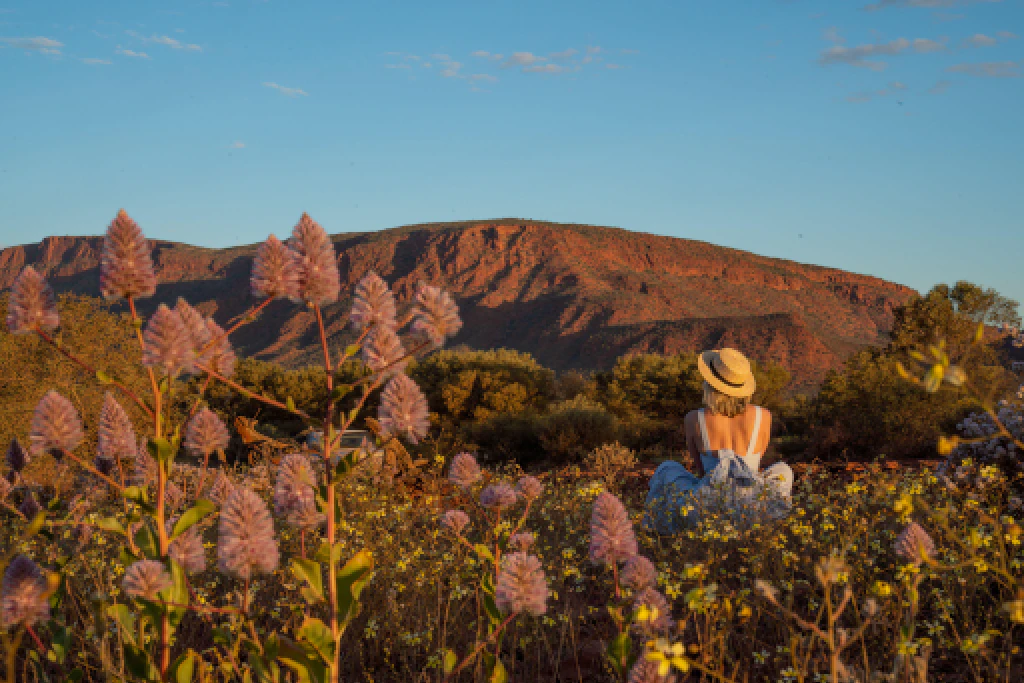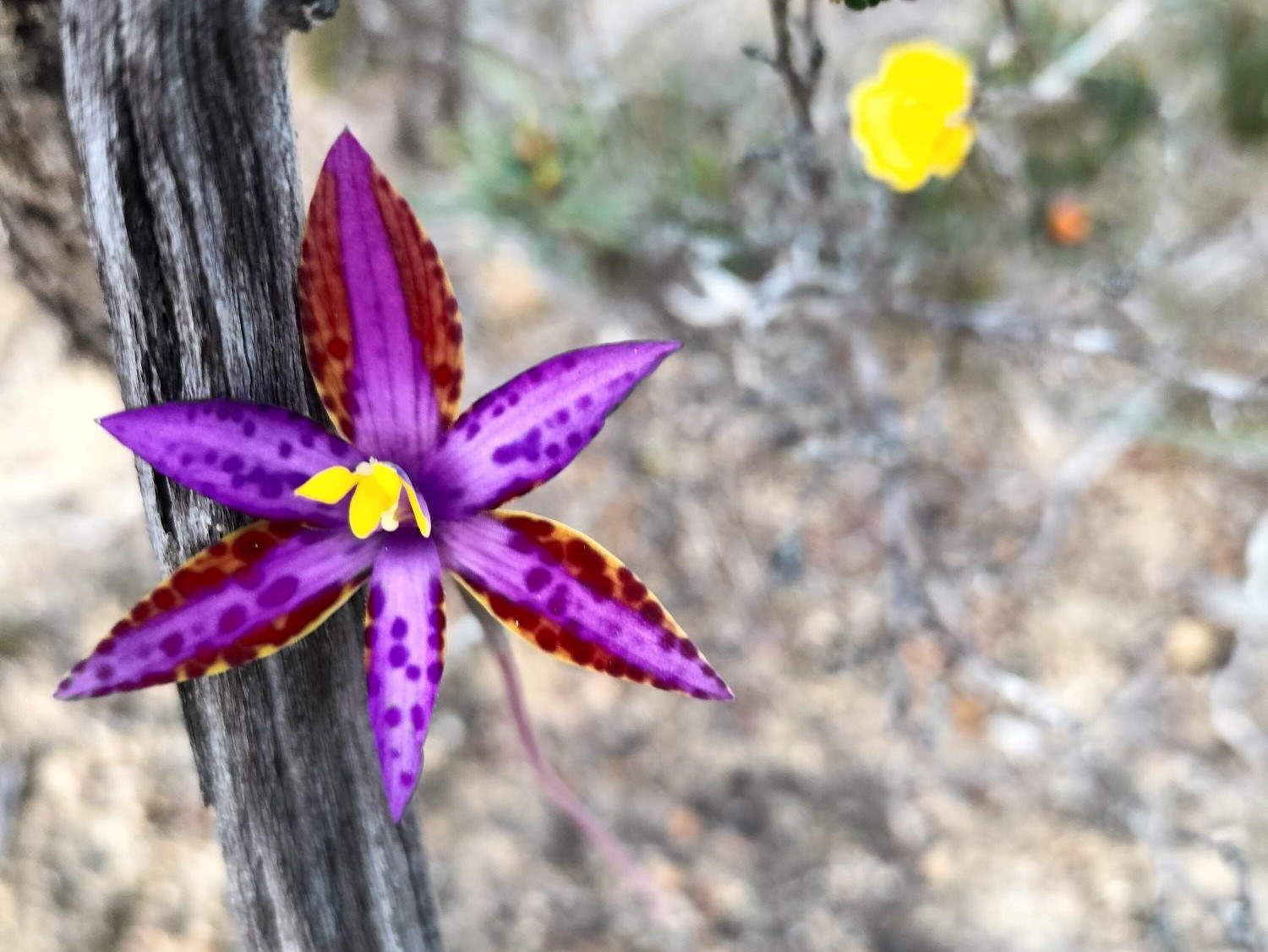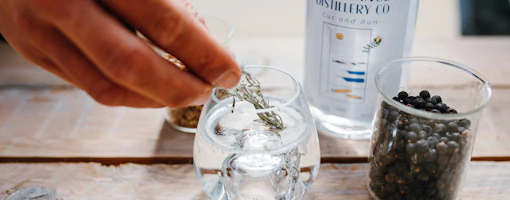
Wildflower hotspots
Every spring, Western Australia’s wildflowers put on an epic display that dazzles visitors across the Golden Outback - though each year is a little different.
While Western Australia usually plays host to one of the best wildflower seasons in the world, there are a lot of factors that go into making a good wildflower season in WA - from the temperature to the rain, whether it was an early or late autumn or winter, and a whole bunch of other things. Yet, though some seasons are amazing, and others are not quite so epic, each has its own charms, and given that the region is so big, chances are that somewhere in the Golden Outback there are incredible wildflowers just waiting for you to visit them.
Throughout the upcoming season, we will collate the best information that we have, bringing you insight from all across the Golden Outback. We know where to start looking for flowers and all the secret wildflower hotspots where they bloom year on year on year.
If you need more information on where to see certain wildflowers - head to our 'Where to see Wildflowers' page for a detailed outline.
Or keep up-to-date with our wildflower reports throughout spring 2023 below 👇
Wildflower Reports
September Wildflower Report 2023
September is usually the best month to see wildflowers in WA, when almost all the state is in bloom simultaneously! It’s prime time for wildflower road trips across the Golden Outback, where you can see the carpets of everlastings, wreath flowers and verticordia in the Wheatbelt - while the famous canola flowers paint the hills yellow.
September also plays host to Wattle Week Festival, Dalwallinu, when the streets come alive in bright and beautiful wattle. While down on the south coast, wildflower season is welcomed in with the Esperance Wildflower Festival and the Ravensthorpe Wildflower Show & Spring Festival.
Darkan - Update 25 September 2023.
Darkan and the surrounding area are fortunate to have wildflowers on display year round. Alison from Forest Explorers has spotted these varieties recently.




Dumbleyung - Update 10 September 2023.
While conducting recon for her upcoming Southern Wheatbelt Wander Tour, Alison from Forest Explorers has spotted these beautiful Green Spider Orchids.


Wongan Hills - Update 10 September 2023.
A variety of flowers are beginning to bloom around the Wongan Hills area. Drop into the Wongan Hills Visitor Centre for local advice, information and a coffee.
- The Wongan Wildflower Walk is looking great at the moment with some cowslip, donkey, leopard and spider orchids and various wildflowers including Cat's Paws, dampiera, pea flowers etc. Grevillia, Drooping She Oak Golden Wattle and other natives are looking great.
- Flat Rocks and Gathercole reserves have smoke bush, copper cups, blue tinsell, wattles, flaming grevillea, black toothbrush, kunzea, waitsea, hibbertia, foxglove, purple and yellow calytrix yellow verticordia and more.
- At the bottom of Mount Matilda there are a lot of donkey, greenhood and banded greenhood orchids.
- Roadside on the drive to Mt O'Brien and the Wongan Hills airport.
- The Burakin townsite has excellent hakeas and grevilia.
- Reynoldson Reserve has the rare Black Toothbrush and Hibbertia.


























August Wildflower Report 2023
August is usually the best time to see wildflowers in the Gascoyne-Murchison and the beginning of the season in the Goldfields and the Wheatbelt. By the end of August, you can also start to see wildflowers around Perth, so this is a good way to gauge what’s growing out there in the rest of the West too!
One of the best places to see wildflowers in WA is Wildflower Country north of Perth, so keep an eye on predictions up there and from the Visitors Centres around Mingenew and Coalseam Conservation Park, which are filled with carpets of flowers on a good year.
This Eastern Queen of Sheba has just been found in low heath country near Oliver Road between Kukerin and Lake Grace by Claudia Hadlow, who’s been a local wildflower expert and land care officer in the Dumbleyung Shire for about 30 years.

Sandstone and Lake Mason - Update 23 August 2023.
Have seen the following starting to bloom: white everlastings, purple flannel bush, purple bush daisy, eremophila.









Murchison region - Update 23 August 2023
One of members, Forest Explorers has spotted these beauties while travelling through the Murchison region.





Norseman - Update 17 August 2023
Norseman is starting to bloom with a range of wildflowers.








Canning Stock Route - Update 15 August 2023.
When travelling the Canning Stock Route wildflowers such as fan flowers, mulla mulla, bergia perennials, tinsel flowers, grevillia and hakeas can be spotted.






Beverley - Update 17 August 2023
Beverley roadside and reserves are blooming with a variety of orchids and a whole lot of snail orchids ready to bloom.







July Wildflower Report 2023
This is usually when we would start to see the first signs of the early wildflowers creeping up in the Gascoyne-Murchison, so we’re keeping our eyes out and doing rain dances across the state to help coax them out.
Tarin Rock Reserve, Kukerin - Update 26 July 2023.
Bush flowers can be seen year round at the Tarin Rock Reserve in Kukerin. In 2016 the Wheatbelt NRM conducted a BioBlitz and have created a list of all the plant species they found. Jolanda Keeble's "A Field Guide to the Flora of the Tarin Rock Reserve" book also provides comprehensive information on flora in the area.












Peace Gorge, Meekatharra - Update 26 July 2023.
Wildflowers such as mulla mulla and acaia trees are appearing.


October Wildflower Report 2023
In a typical year, October is the southern outback’s time to step into the spotlight. Up north in the Gascoyne-Murchison the blaze of glory is starting to look a little less glorious, while the Goldfields is looking decidedly more lacklustre.
Still, it isn’t all doom and gloom, the carpets of everlastings may be over for another season, but the orchids and verticordia are still out in the Wheatbelt, with Wongan Hill’s Reynoldson Reserve Festival Weekend to look forward to (dates tbc - it can sometimes be pushed to November, depending on the season).
The wildflowers in the Wheatbelt are usually still pretty good in October too - especially down south - so it’s the perfect time to get out and do a wildflower road trip. Check out the 7-10 day Esperance Wildflower Explorer, where you can hit all the wildflower hotspots in one fell swoop before the end of wildflower season 2022.





























